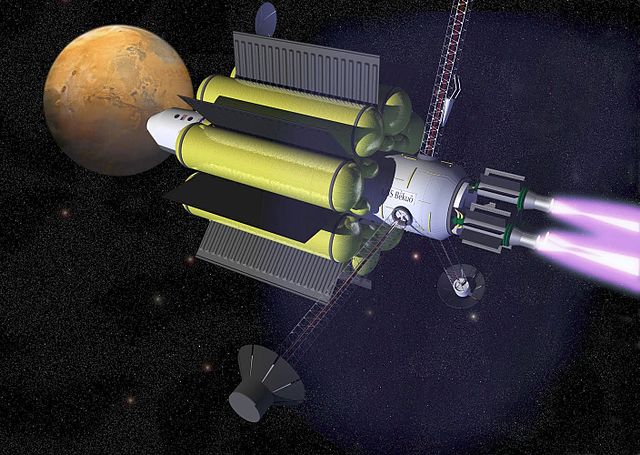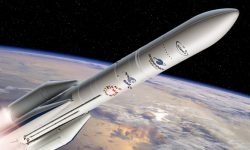
Princeton wants to boost the plasma engine with nuclear fusion
– News of June 13, 2017 –
The US laboratory in Princeton, New Jersey, has been awarded two research grants by NASA to fund research on the design of a space engine involving nuclear fusion. Nuclear fusion is a bit like the holy grail of space propulsion. Used in an electric generator, it could provide an absolutely disproportionate power to plasma engines or even more hypothetical propulsions.
But the concept of the Princeton Plasma Physics Lab (PPPL) is a little different. Researchers working on this project do not want to use nuclear fusion to produce electricity. On the contrary, they think that they can create a thrust, it is to say a motor, by the direct ejection of the fusion plasma. This engine could then reach the speed of 30000 km per second, 10% of the speed of light. The concept is not new: the theoretical basis of such an engine is known since the 60s but the technologies of the time were unable to maintain a stable plasma.
Progress in the fields of superconductors and materials physics, however, gives hope to researchers. The engine they hope to develop will have a weight of only 11 tons for a power of 10 megawatts. It would work through the use of a low frequency radio to heat a mixture of deuterium and helium 3. The plasma formed would be confined in a ring shape through magnetic fields. It would then be possible to escape a small portion of the plasma rotating at high speed to create the thrust. Such an engine would have a spectacular performance. It would allow a spacecraft to accelerate to a non-negligible fraction of the speed of light, greatly simplifying the journey into our solar system and opening the door of neighboring systems.
However, there are still many technological challenges to resolve before seeing such an engine in action. First, the size of the system. It is already very difficult to maintain a fusion plasma by using gigantic installations, so it is difficult to imagine such a system to take place on the top floor of a rocket. However, many companies and governments are funding research on the development and miniaturization of fusion reactors. The Princeton lab, meanwhile, hopes to demonstrate its concept in 2019 or 2020.

A Berlin team develops a plasma engine
– News of May 23, 2017 –
Berkant Göksel, a researcher at the University of Berlin, and his team want to revolutionize space transportation with their new plasma engine.
A plasma motor operates from an electrical source. Plasma is ionized and accelerated by magnetic fields to provide thrust. There are many techniques to achieve this result : the VASIMR motor or the Hall effect motors are examples of plasma motors.
The plasma engine of the Berkant Göksel team uses pulsed electric shocks in the nanosecond range. The results are impressive : a traditional plasma engine is very efficient because it consumes very little fuel to provide a given acceleration but its thrust is also very low. It will therefore take a very long time to provide acceleration. This new engine promises to free us from this constraint of low power.
The German team uses an engine only 80mm long. It is able to provide a thrust of 8 millinewtons at each impulse. It would be enough to increase the frequency of the engine to 1000 pulses per second to have an efficiency similar to a modern jet engine. It’s a real revolution …
However, the Berlin team still has a lot of work because for the moment it can not operate its engine beyond 50 pulses per second. And to optimize this engine, you must first be able to observe it correctly. But the speeds involved are so important and impressive that the team needs a camera with two million frames per second to properly study the plasma reactions inside the engine. Such an engine would also need a powerful and compact power source. It will therefore be necessary to wait for major advances in the production and storage of electricity in order to take full advantage of its potential. Nuclear fusion and graphene batteries will be serious candidates.
Image by NASA; Posted in Public domain, via Wikimedia Commons









